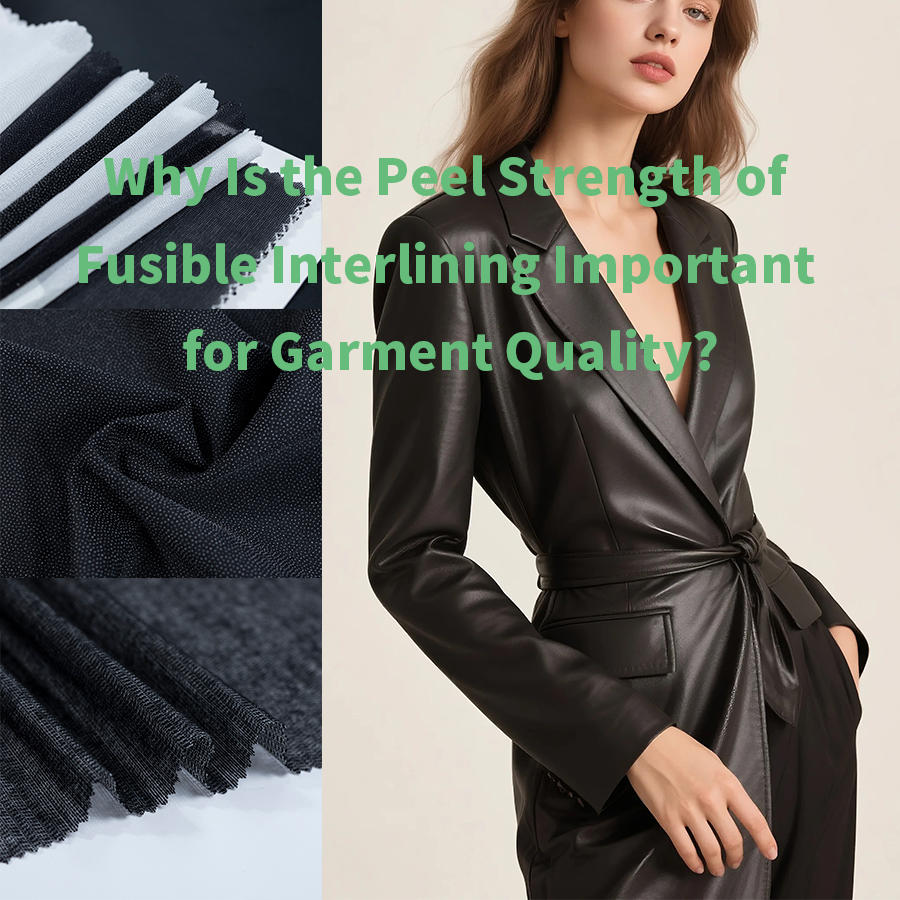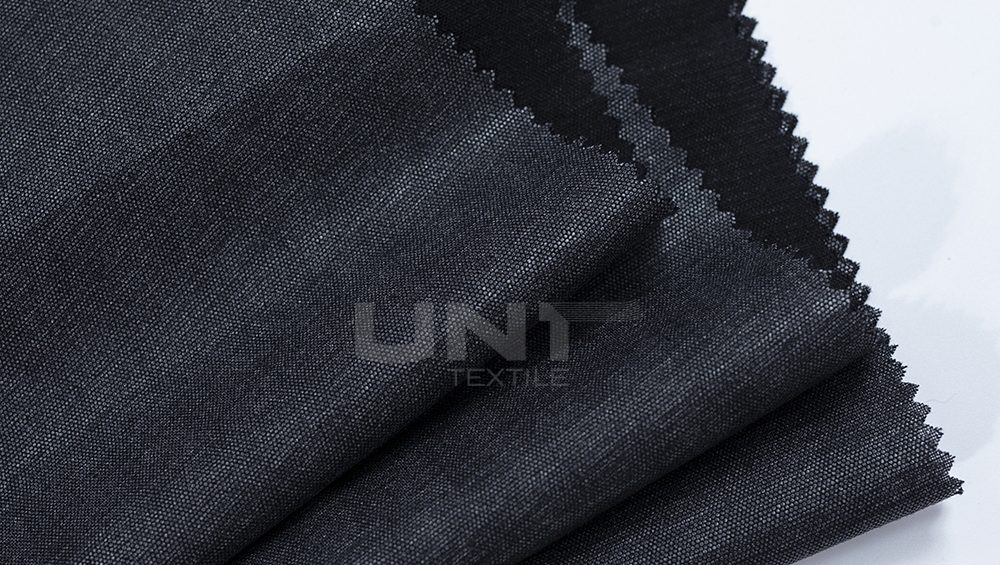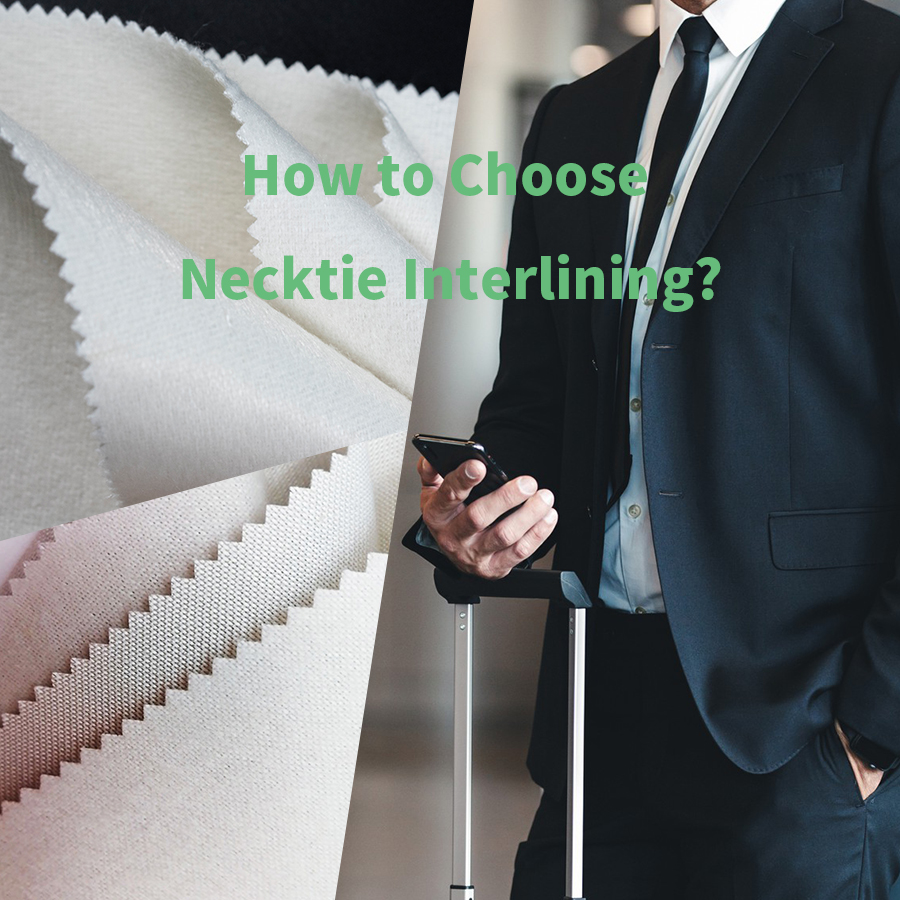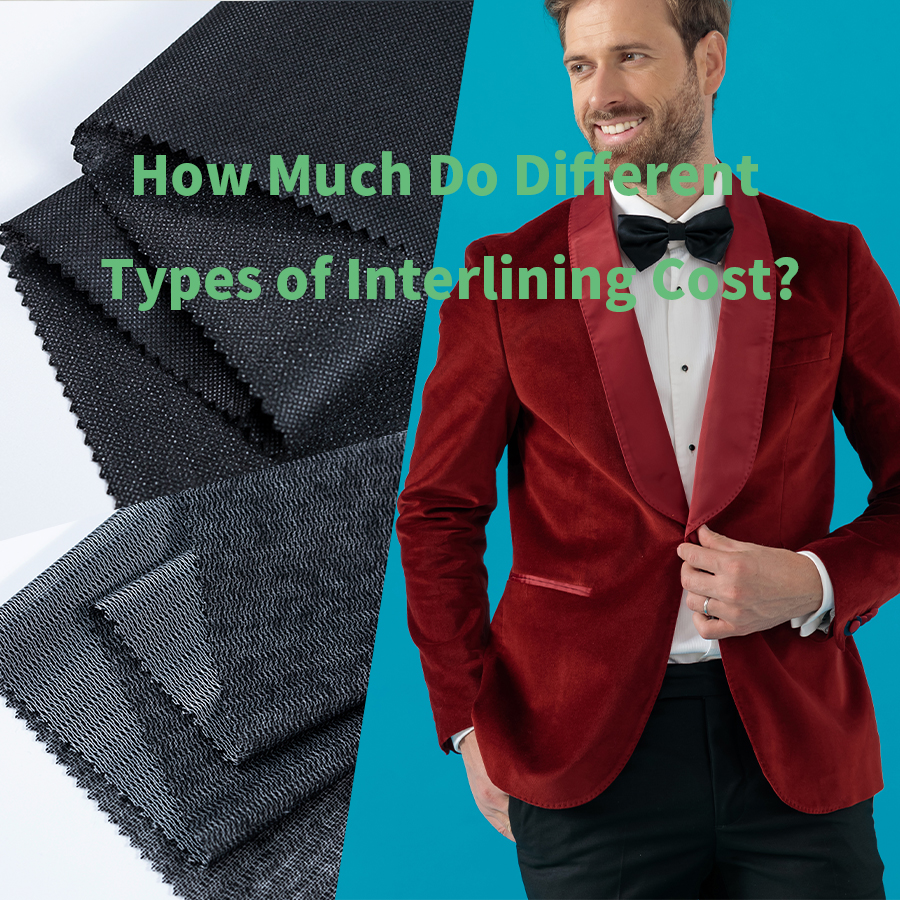Why Is the Peel Strength of Fusible Interlining Important?

Why Is the Peel Strength of Fusible Interlining Important?
When fusible interlining is bonded to fabric, the measure of success lies in its peel strength—the resistance of the adhesive bond to separation. Peel strength is more than a technical parameter; it directly affects how well garments hold their shape, how they look after repeated use, and how long they last. Let’s break down why it matters, what factors influence it, and how both manufacturers and consumers can ensure quality.
Why Peel Strength Matters in Fusible Interlining
-
Durability in Daily Wear
A strong bond ensures interlining remains firmly attached through movement, washing, and ironing. Weak bonds may peel away, making garments look cheap or defective. -
Shape Retention
Interlining supports collars, lapels, cuffs, and waistbands. Without sufficient peel strength, these areas lose form, sag, or wrinkle. -
Smooth Appearance
High peel strength minimizes bubbles, puckering, or adhesive seep-through, preserving a professional finish. -
Aftercare Resistance
Clothes endure laundering, pressing, and dry-cleaning. Interlining with strong peel strength withstands these processes without delamination. -
Reduced Waste and Returns
Poor adhesion leads to rework or customer complaints. Strong peel strength helps ensure product reliability, saving time and costs.
What Factors Influence Peel Strength?
| Factor | Influence on Peel Strength |
|---|---|
| Adhesive Type | Polyamide, polyester, and hot-melt adhesives behave differently depending on fabric type. |
| Coating Method | Dot, double-dot, and full coatings determine coverage and bonding uniformity. |
| Fusing Temperature, Time & Pressure | Correct settings melt adhesive evenly; errors lead to weak or uneven adhesion. |
| Fabric Characteristics | Fiber content, surface texture, and fabric density affect how well adhesive bonds. |
| Interlining Structure | Woven, nonwoven, or knitted interlinings interact differently with outer fabrics. |
| Finishing & Aftercare | Cooling, drying, and post-treatment influence long-term bond performance. |
How to Ensure High Peel Strength?
-
Select the Right Adhesive System: Match fabric type with the most suitable adhesive.
-
Optimize Fusing Conditions: Control temperature, pressure, and dwell time carefully.
-
Monitor Adhesive Application: Ensure uniform adhesive distribution to avoid weak spots.
-
Match Material Properties: Choose interlinings compatible with fabric shrinkage and weight.
-
Test Before Mass Production: Conduct peel tests and laundering trials to confirm reliability.
How Do Manufacturers Ensure Adequate Peel Strength and Quality Assurance?
-
Material Selection
Adhesives and fabrics are carefully matched to guarantee compatibility and consistent results. -
Advanced Fusing Technology
Equipment with accurate controls ensures stable bonding across large production runs. -
Routine Peel Testing
Each batch undergoes standardized peel strength tests to meet international benchmarks. -
Simulated Laundering
Samples are subjected to wash and dry-cleaning cycles to predict how garments perform in real life. -
Visual & Structural Checks
Inspectors examine garments for bubbling, stiffness, or adhesive seep-through to maintain smoothness and quality.
What Can Consumers Do to Make Informed Decisions About Garment Quality?
-
Check Key Areas
Examine collars, cuffs, and waistbands for flatness and stability. Poor adhesion shows in ripples or bubbles. -
Consider Brand Reliability
Established brands often source interlinings from trusted suppliers with strict quality control. -
Read Labels Carefully
Care instructions often reveal whether garments are designed to withstand frequent washing without bond failure. -
Evaluate Long-Term Shape
High-quality clothing tends to keep its structure after multiple washes and wears. -
Seek Certifications & Ask Questions
Look for textile certifications or ask sales staff about garment construction to assess quality better.
FAQ (Frequently Asked Questions)
Q: What is considered a strong peel strength?
A: There isn’t a single standard value—it depends on fabric, adhesive, and garment type. Manufacturers usually define minimum acceptable levels for each product.
Q: Can weak peel strength be fixed after fusing?
A: Once garments are made, correction is limited. Prevention through correct fusing parameters is the most reliable solution.
Q: Does higher peel strength always mean a stiffer garment?
A: Not always, but stronger bonding often requires more adhesive. Modern adhesives balance strength with flexibility to minimize stiffness.
Q: How does peel strength affect consumer experience?
A: Strong peel strength means better shape retention, smoother appearance, and longer garment life—improving overall satisfaction.
Why Choose Shanghai Uneed Textile Co., Ltd.?
At Shanghai Uneed Textile Co., Ltd., we focus on producing fusible interlinings with reliable peel strength and superior performance.
-
Technical Expertise: Our team develops adhesive systems tailored to different fabrics and garment types.
-
Precision Production: Using advanced machinery, we ensure consistent fusing results with high peel strength.
-
Strict Quality Control: Every batch is tested for adhesion, washing resistance, and shape retention.
-
Customized Support: We guide clients in choosing the right interlining to match their fabrics and processing needs.
-
Trusted Global Supplier: With years of export experience, we provide not only products but also technical assistance and reliable logistics.
By choosing us, you gain a partner committed to quality, durability, and customer satisfaction.
continue reading
Related Posts
This article explains what necktie interlining is, common materials and weights, construction options, color characteristics, and practical tips for choosing the right interlining for different tie styles.
This article provides an overview of the typical price ranges of different types of interlining, including woven, nonwoven, fusible, elastic, shirt, and hair interlining.
This article compares hair interlining and horse hair interlining in terms of material composition, structure, performance, and garment applications, helping manufacturers and tailors choose the right interlining for different types of tailored garments.






.png)